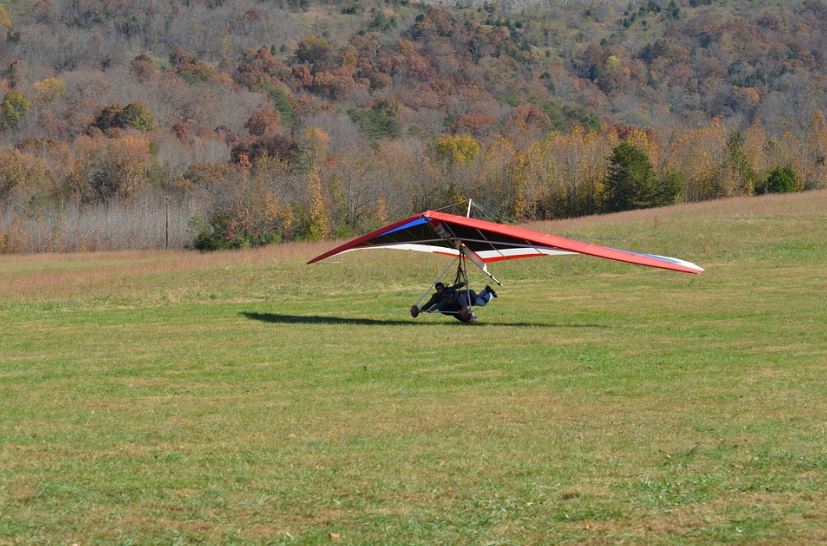Hang gliding is a sport that includes flying in a light, unpowered plane that a pilot can hold. Typically, you can perform a takeoff by leaping into the sky from a hill or a cliff.
Hang gliding enables us to fly and enjoy the sky the most natural way possible, with our arms leading us in the direction we want to travel. It’s a beautiful adventure. The risks, on the other hand, are tremendous.
When hang gliding, safety is of the greatest concern. So before trying out this intense sport, here are some tips to remember for safe hang gliding.
Perform a Pre-flight Glider Check
Examine the glider, and all of the gear hooked to it. Check to see if the glider is fit to fly or not. Walk around your hang glider 360 degrees, inspecting essential points such as bolts, wires, ropes, wingtips, battens, and so on. Secure loose fittings, feel the leading edge with your hands to check for mylar bends, and symmetry-check everything. Examine your harness and perform a hang test.
Everything should have a secure and stable feeling to it. If not, figure out how to make things better. Examine every aspect of the glider and repeat as necessary.
Always Bring Your Crew
It is not advisable to fly alone. Even though you’ve gone through extensive training and are confident in your abilities, you must still have other individuals on the field.
These people must be ready to help you if you require assistance unexpectedly. They may very well be able to detect stuff that you overlooked because of familiarity blindness. Lastly, flying with pals is, of course, more enjoyable.
Be Mindful of the Hang Straps
When changing or tightening your hang strap, always be cautious. Minor modifications in the hang loop placement may have an impact on your glider’s flight characteristics. Use a steel carabineer with a lock for extra precaution.
Choose a High-Quality Gear and Equipment
Acquire the finest and high-quality full-face helmet as well as a parachute. Change your gear once a year. You may choose an open-face or full-face helmet based on your own preference, but ensure it has the necessary padding to absorb pressure and impact when flying.
Monitor the Weather
Keep an eye on the weather report days before your flight, and do not be afraid to cancel if a storm or other type of inconvenience happens. You may experience gusts a hundred yards away and even beyond, even if the storm’s eye does not pass through your gliding route.
If the weather suddenly changes while you’re on the field, be more cautious and vigilant, and abort if needed. If the winds are too intense or too light, do not fly.
Check the Temperature
You may hang glide in the scorching heat of summer or during the cold winter. However, it’s ideal not to deal with weather extremes when you’re still learning. It would be best to focus on learning hang gliding rather than keeping yourself hydrated or escaping frostbite.
Ensure Correct Wing Position Before Launching
Most launch errors happen because of the incorrectly positioned glider wing in the direction of the wind during the beginning of the flight. Make sure not to launch if the glider’s wings are not yet correctly balanced and if you do not yet have a proper pitch.
Always Sprint When Launching
The takeoff should take place on a very steep hill with no obstacles like trees, huge rocks, gear, or people It’s okay to take a few slow steps at first, but then sprint hard. To acquire an excellent gliding momentum, sprint aggressively towards the cliff. Slow run takeoff can lead a wing to stall, modify its angle of attack, or drag the wingtip.
Ensure a total commitment during launching. Most launches take place at high altitudes with little wind and steep slopes. Takeoffs require good launching abilities and a solid run with precise glider positioning. Always remember also to wear gloves which would allow you to maintain a firm grip.
Check the Windspeed Before Taking Off
Consider not flying if the winds are too strong for you to manage your hang glider alone unless you are well experienced with the flying location and wire crew. Establish your own rules when flying. Note the windspeeds you are comfortable flying in and stick to them, regardless of what other flyers are doing.
Always Clear Your Turns
Make sure your turns are clear and that you’re always aware of where the other gliders are. Do not simply assume that the other pilots will see you.
Check the horizon for air activity regularly. It would also help to fly in vibrant hues. If it’s too crowded, leave a gaggle. In hot conditions, avoid turning too close to a mountain.
Follow Safety Measures and Precautions
Pay close attention to instructions on gliding equipment, harness, helmet fit, and so on. Bring it to the notice of an instructor if something doesn’t feel correct.
Even though they conduct most training in a controlled setting, and hundreds of individuals learn the sport without accidents each year, hang gliding is not without risk. Safety measures are taken and applied for a reason.
Relax, Focus, and Enjoy the Flight
Tension around both shoulders and arms, in particular, can ruin your form and make a great flight difficult. Relax, and when landing, avoid a poor landing pattern approach. Choose a large, uncrowded landing area. Don’t get too close to the treetops, and always keep your distance.



